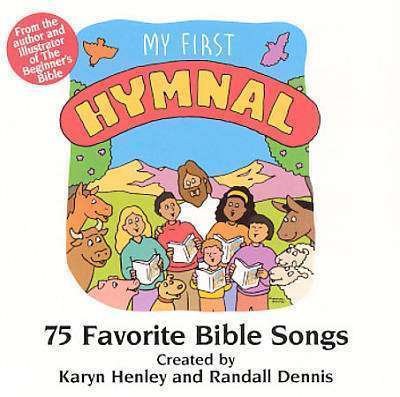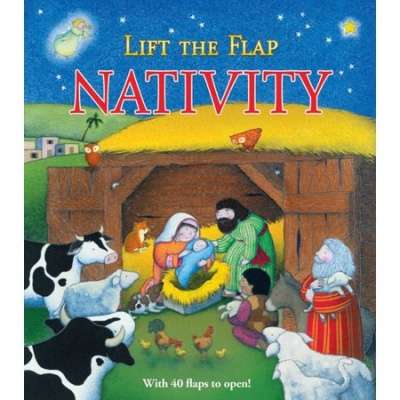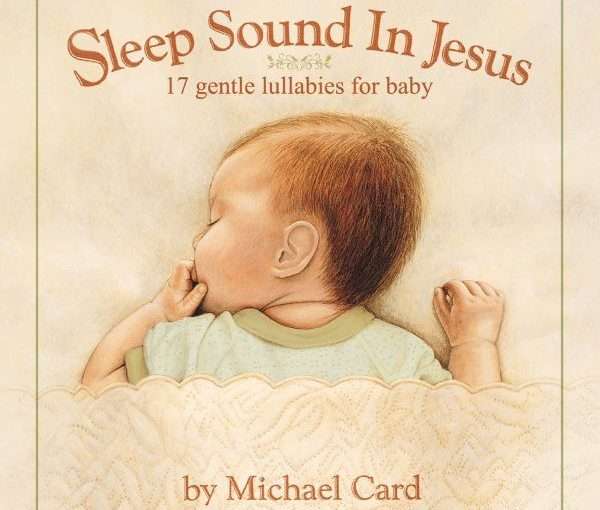INTRODUCTION
Finding quality resources that help nurture the faith development of children and families can sometimes be difficult. This is the first post in a series, broken up by age-level focus, that can be of help to children, family members, and ministry leaders as they navigate the pilgrimage of the Christian faith. I will start with early childhood (birth to two years) and work up to the PreTeen age group. I have included a variety of mediums throughout the series such as text, music, toys/games, and online resources.
BIRTH TO TWO YEARS
 Card, Michael. Sleep Sound in Jesus, Compact disc (CD). Brentwood, TN: Sparrow Records, 1989.
Card, Michael. Sleep Sound in Jesus, Compact disc (CD). Brentwood, TN: Sparrow Records, 1989.
Prolific Christian songwriter Michael Card created this album of soft and melodic lullabies with rich lyrics proclaiming blessings and prayers over little children (http://www.christianbook.com/sleep-sound-in-jesus-compact-disc/0006176933/pd/CD086).
 Currie, Robin, and Cindy Adams. Baby bible storybook. Colorado Springs, CO: David C. Cook, 2003.
Currie, Robin, and Cindy Adams. Baby bible storybook. Colorado Springs, CO: David C. Cook, 2003.
This book puts a series of major Bible stories into the simplest terms so the parent can read them to the child as the child looks at the illustrated picture. A scripture reference is given at the top and at the bottom is a very short prayer that the parent can say as they pray with their child (http://www.amazon.com/Baby-Bible-Storybook-Robin-Currie/dp/0781400767).
First Steps in Worship. Founded by Tracy Rader.
This is a company that produces ready-to-go kits of worship resources for use in infant and toddler worship settings. Products include kits of books and manipulatives such as “Baby Bedtime Blessings,” “Cradle Choir,” “Pass-It-On Praise,” and “Wiggle Into Worship.” The tote bags and the manipulatives are soft and washable for easy cleaning in between uses (firststepsinworship.com).
 Henley, Karen, Dennas Davis, and Randall Dennis. My first hymnal: 75 Bible songs and what they mean. Brentwood, TN: Sparrow Corporation, 1994.
Henley, Karen, Dennas Davis, and Randall Dennis. My first hymnal: 75 Bible songs and what they mean. Brentwood, TN: Sparrow Corporation, 1994.
This small hardback book includes very simple hymn and Christian song melodies along with a brief explanation/devotion about the lyrics. It is meant for the parent to sing to their child and then read the short devotional thought to the child (http://www.amazon.com/My-First-Hymnal-Bible-Songs/dp/0917143353).
Morganthaler, Shirley K. Right from the start: A parent’s guide to the young child’s faith development. Revised edition. St. Louis: Concordia, 2001.
This text for parents and leaders is a tool for understanding the faith development of children from both a spiritual perspective as well as from the field of neuroscience (http://www.amazon.com/Right-Start-Parents-Childs-Development/dp/0570052777).
Nederveld, Patricia L. God loves me storybooks: The Bible in 52 storybooks. Revised edition. Grand Rapids, MI: Faith Alive, 2015.
This collection of short books uses both art of Bible stories as well as photographs of young children to help kids make the connection between Bible stories and themselves. Parents can read one storybook each week of the year to their children or go at whatever pace they prefer (http://www.faithaliveresources.org/Products/001400/god-loves-me-storybooks-revised-edition.aspx).
Saxon, Terrell. Baby blessings: A faith-based parenting guide, birth to two. Colorado Springs: Standard Publishing, 2003.
This resource covers multiple aspects of early child development from cognitive to spiritual. It has a section of practical activities that parents can do with their children to help nurture their faith development (http://www.amazon.com/Baby-Blessings-Faith-Based-Guide-Parents/dp/0784713588).
Thomas, Mack. The first step Bible. Grand Rapids: Zondervan. 1994.
This 445-page condensed paraphrase of the Bible takes major stories from the Old Testament and New Testament and retells them in three sentences or less per page. Each sentence is usually less than ten words. Each story is accompanied by large illustrations depicting the Biblical scene. There is a helpful section in the back called “Teaching the Bible to the Very Young,” which gives parents tips on how to use the book and talk about the Bible with infants and toddlers (https://books.google.com/books/about/The_First_Step_Bible.html?id=KlRuXaTKraYC).
Top Ten Christian Songs for Little Kids, compiled by Jesse Joyner (April 24, 2012).
I once posted a blog of what I subjectively feel are the “top ten” Christian songs for little kids. As of this writing, that post alone has received over sixteen thousand hits, which tells me that people are interested in good classic songs that teach children about God and help them connect with God. If you follow this link, you can find more links that provide a version of each song on YouTube as well as an explanation as to why I think that song should be included in the list: (http://jessejoyner.com/top-10-christian-songs-for-little-kids/). Here is the list itself:
Count Your Blessings
Father Abraham
Deep and Wide
The Butterfly Song
Hallelu, Praise Ye the Lord
I’ve Got the Joy, Joy, Joy, Joy Down in My Heart
He’s Got The Whole World In His Hands
This Little Light of Mine
Jesus Loves the Little Children
Jesus Loves Me
 Zobel-Nolan, Allia. Lift the flap nativity. Illustrated by Tace Moroney. Reader’s Digest: New York. 2001.
Zobel-Nolan, Allia. Lift the flap nativity. Illustrated by Tace Moroney. Reader’s Digest: New York. 2001.
As the title suggests, this book tells the Christmas story using simple words and flap-opening so the child can physically interact with the story as they hear it from their parents. The illustrations are colorful but not too bright. The art form has a level of refreshing minimalism so the focus is on the relevant characters and storyline rather than distracting cartoonish embellishments (http://books.simonandschuster.com/Lift-the-Flap-Nativity/Allia-Zobel-Nolan/Lift-the-Flap/9780794435271).
*This list comes directly from a paper I wrote for a class at Trinity Evangelical Divinity School in Deerfield, IL in March 2016. The class was ES 7524 (Education and Ministry Experiences for Children) taught by Dr. Magdalene Larson.




 Card, Michael. Sleep Sound in Jesus, Compact disc (CD). Brentwood, TN: Sparrow Records, 1989.
Card, Michael. Sleep Sound in Jesus, Compact disc (CD). Brentwood, TN: Sparrow Records, 1989. Currie, Robin, and Cindy Adams. Baby bible storybook. Colorado Springs, CO: David C. Cook, 2003.
Currie, Robin, and Cindy Adams. Baby bible storybook. Colorado Springs, CO: David C. Cook, 2003. Henley, Karen, Dennas Davis, and Randall Dennis. My first hymnal: 75 Bible songs and what they mean. Brentwood, TN: Sparrow Corporation, 1994.
Henley, Karen, Dennas Davis, and Randall Dennis. My first hymnal: 75 Bible songs and what they mean. Brentwood, TN: Sparrow Corporation, 1994. Zobel-Nolan, Allia. Lift the flap nativity. Illustrated by Tace Moroney. Reader’s Digest: New York. 2001.
Zobel-Nolan, Allia. Lift the flap nativity. Illustrated by Tace Moroney. Reader’s Digest: New York. 2001.